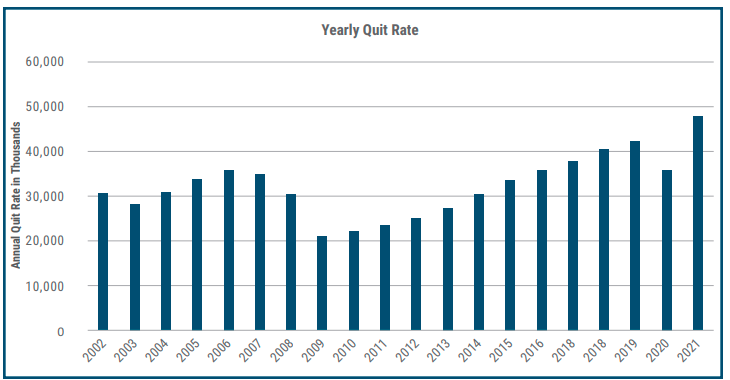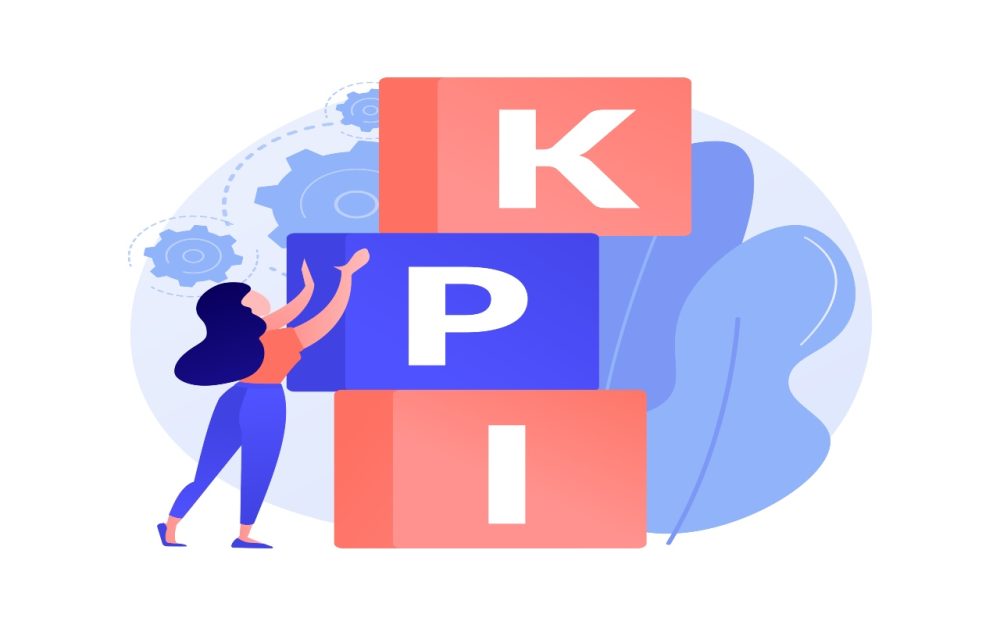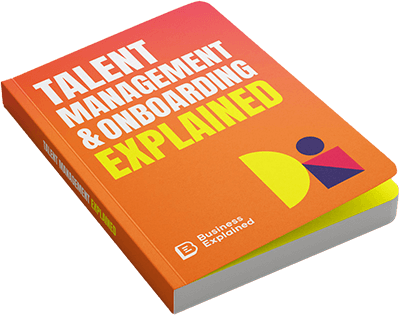Table of Contents
- #1 Employee Turnover Rate
- #2 Time to Hire
- #3 Cost per Hire
- #4 Employee Engagement
- #5 Training and Development Costs
- #6 Internal Mobility Rate
- #7 Performance Metrics
- #8 Employee Retention Rate
- #9 Diversity and Inclusion Metrics
- #10 Succession Planning Rate
- Why Measure Talent Management KPIs?
- How to Implement Talent Management Metrics?
- Monitoring Talent Management KPIs
- Talent Management Metrics Example
Effective talent management is crucial for organizational success. The right talent management metrics and KPIs help companies streamline their HR processes, boost employee satisfaction, and enhance overall productivity.
This blog delves into the top 10 talent management KPIs that you need to track to ensure your organization is on the path to success.
#1 Employee Turnover Rate
Employee turnover rate is a fundamental talent management KPI that measures the rate at which employees leave an organization. High turnover rates can indicate underlying issues such as poor management, inadequate compensation, or lack of career growth opportunities. To calculate the employee turnover rate, use the following formula:
Turnover Rate = (Number of employees who left / Average number of employees) × 100
Understanding this metric allows organizations to identify trends and proactively improve employee retention. For instance, if turnover rates spike in a particular department, it may signal a need for management training or team-building initiatives. According to the Society for Human Resource Management (SHRM), the average turnover rate across all industries in the U.S. is around 19%. Regularly monitoring and analyzing turnover data helps organizations implement targeted strategies to retain top talent and reduce turnover-related costs.

#2 Time to Hire
Time to hire is another critical KPI in talent management. It measures the number of days it takes to fill a vacant position from the moment a job is posted until the candidate accepts the offer. Prolonged hiring time can be costly and may result in lost productivity. It can also affect the candidate’s experience, potentially leading to a negative perception of the company.
To calculate the time to hire, use the following formula:
Time to Hire = Total Number of Days to Fill a Position
Reducing the time to hire is essential for maintaining a competitive edge in attracting top talent. This can be achieved by streamlining the recruitment process, leveraging technology for applicant tracking, and enhancing collaboration between HR and hiring managers. A study by the Recruitment and Employment Confederation (REC) found that the average time to hire is 27.5 days. Companies with shorter hiring times often have a more efficient recruitment process and are better positioned to secure high-quality candidates.
#3 Cost per Hire
Cost per hire is a vital metric that quantifies the total expenditure involved in recruiting a new employee. This includes advertising costs, recruiter fees, relocation expenses, and training costs. To calculate cost per hire, use the following formula:
Cost per Hire = Total recruitment costs / Number of hires
Understanding cost per hire helps organizations allocate their recruitment budget more effectively and identify areas for cost reduction. According to the Human Capital Benchmarking Report by SHRM, the average cost per hire is approximately $4,129. By monitoring this KPI, companies can optimize their recruitment strategies, improve ROI, and ensure that resources are used efficiently.
#4 Employee Engagement
Employee engagement measures employees’ enthusiasm and dedication towards their work and organization. High engagement levels correlate with increased productivity, lower turnover rates, and better performance. Companies often use surveys, pulse checks, and feedback tools to assess employee engagement.
Critical aspects of employee engagement include job satisfaction, alignment with company values, and growth opportunities. A Gallup study found that highly engaged teams show 21% greater profitability. Organizations can boost engagement by fostering a positive work culture, recognizing and rewarding contributions, and providing professional development opportunities. Regularly tracking and improving employee engagement metrics ensures a motivated and committed workforce.
You can read more about this in our Employee Engagement Strategy Explained eBook, which explores in detail how employee engagement impacts business productivity, retention and turnover, customer satisfaction, and many other aspects of business functioning.

#5 Training and Development Costs
Investing in employee training and development is crucial for enhancing skills, improving performance, and retaining talent. Training and development costs measure the financial investment in these programs. To calculate these costs, consider expenses such as training materials, external trainers, and time spent on training.
Tracking training and development costs helps organizations evaluate their training programs’ ROI and identify areas for improvement. According to the Association for Talent Development (ATD), the average direct learning expenditure per employee is $1,299. By monitoring this KPI, companies can ensure they invest effectively in their workforce and foster a continuous learning culture.
#6 Internal Mobility Rate
Internal mobility rate measures the rate employees move within the organization, including promotions, lateral transfers, and role changes. High internal mobility indicates a healthy talent pipeline and effective career development programs. To calculate the internal mobility rate, use the following formula:
Internal Mobility Rate = (Number of internal moves / Total number of employees) × 100
Promoting internal mobility enhances employee satisfaction, reduces turnover, and efficiently fills critical roles. A LinkedIn report found that employees at companies with high internal mobility stay almost twice as long as those at companies with low internal mobility. Organizations can identify opportunities to improve internal career paths and retain top talent by tracking this KPI.
#7 Performance Metrics
Performance metrics evaluate employee productivity, effectiveness, and contribution to organizational goals. These metrics can include sales figures, customer satisfaction scores, project completion rates, and other key performance indicators relevant to specific roles. Regularly monitoring performance metrics helps identify high performers and areas needing improvement.
Effective performance management involves setting clear expectations, providing regular feedback, and aligning individual goals with organizational objectives. According to a study by Harvard Business Review, companies that effectively manage performance are 1.5 times more likely to outperform their peers financially. Organizations can foster a high-performance culture and drive business success by tracking performance metrics.
Read our eBook about performance management if you want to learn more about strategies and techniques for measuring, managing and improving performance in business.
#8 Employee Retention Rate
Employee retention rate measures the percentage of employees who remain with the organization over a specific period. High retention rates indicate a stable and satisfied workforce, while low rates may signal issues with company culture, management, or compensation. To calculate the employee retention rate, use the following formula:
Employee Retention Rate = (Number of employees who stayed / Total number of employees) × 100
Improving retention rates involves addressing the root causes of turnover, such as enhancing work-life balance, providing competitive benefits, and creating a positive work environment. A report by the Work Institute found that 75% of the causes of employee turnover are preventable. Organizations can maintain a stable and engaged workforce by monitoring retention rates and implementing targeted retention strategies.
#9 Diversity and Inclusion Metrics
Diversity and inclusion (D&I) metrics assess the representation and experiences of different demographic groups within the organization. These metrics can include gender diversity, ethnic diversity, and measures of inclusivity, such as employee feedback on the inclusiveness of the workplace. To calculate diversity metrics, use the following formula:
Diversity Metric = (Number of employees in a demographic group / Total number of employees) × 100
Fostering a diverse and inclusive workplace enhances creativity, innovation, and employee satisfaction. A McKinsey report found that companies with high gender diversity are 21% more likely to outperform their peers. By tracking D&I metrics, organizations can identify gaps, implement inclusive policies, and create a more equitable workplace.
#10 Succession Planning Rate
The succession planning rate measures the percentage of key positions with identified successors. Effective succession planning ensures organizational continuity and reduces the risk of leadership gaps. To calculate the succession planning rate, use the following formula:
Succession Planning Rate = (Number of positions with successors / Total number of key positions) × 100
A study by the Corporate Leadership Council found that organizations with strong succession planning processes are more likely to outperform their peers. By tracking this KPI, companies can ensure they are prepared for future leadership transitions and maintain operational stability.
Why Measure Talent Management KPIs?
Talent management is a strategic approach to attracting, developing, retaining, and utilizing individuals with the skills and potential to meet an organization’s current and future needs. You can explore more about this comprehensive process in our eBook about talent management and onboarding.
Measuring talent management KPIs is crucial for several reasons. Firstly, it provides a quantitative basis for evaluating the effectiveness of HR strategies and initiatives. This data-driven approach enables organizations to make informed decisions, allocate resources efficiently, and demonstrate the value of HR to executive leadership.
Secondly, talent management metrics help identify areas of improvement and highlight successful practices. By regularly tracking these metrics, organizations can pinpoint weaknesses in their talent management processes and implement targeted solutions. For example, if employee engagement scores are low, the company can investigate the underlying causes and take steps to enhance job satisfaction and motivation.
Thirdly, measuring talent management metrics fosters accountability and transparency. Clear metrics provide a shared understanding of organizational goals and performance expectations, promoting a culture of continuous improvement. This transparency also helps build trust with employees, as they can see how their contributions impact the company’s success.
Finally, talent management KPIs are essential for benchmarking and competitive analysis. Comparing internal metrics with industry standards allows organizations to gauge their performance relative to competitors and identify best practices. This benchmarking process helps companies stay competitive in the talent market and attract top talent.
How to Implement Talent Management Metrics?
Implementing talent management metrics involves several key steps. First, organizations must define clear objectives and identify the most relevant KPIs for their specific context. This requires collaboration between HR, management, and other stakeholders to ensure alignment with overall business goals.
Next, data collection processes must be established. This involves leveraging HR information systems (HRIS), employee surveys, and other data sources to gather accurate and timely information. Ensuring data integrity and consistency is crucial for reliable analysis.
Once data is collected, it should be analyzed to identify trends, patterns, and areas for improvement. Advanced analytics tools can help visualize data and generate actionable insights. Regular reporting and communication of findings to key stakeholders are essential for driving informed decision-making.
Implementing talent management metrics also requires a culture of continuous improvement. Organizations should regularly review and update their KPIs to reflect changing business needs and market conditions. Providing training and resources to HR professionals and managers ensures they have the skills and knowledge to use these metrics effectively.
Monitoring Talent Management KPIs
Monitoring talent management KPIs is an ongoing process that requires regular review and analysis. A dashboard or reporting system can help track these metrics in real time and provide a comprehensive view of organizational performance. This enables HR teams and management to identify issues and take corrective actions quickly.
Regularly scheduled reviews, such as quarterly or annual performance evaluations, are essential for assessing progress and making necessary adjustments. These reviews should involve key stakeholders to ensure alignment with strategic objectives and promote accountability.
In addition to quantitative data, qualitative feedback from employees is valuable for understanding the context behind the metrics. Employee surveys, focus groups, and exit interviews provide insights into employee experiences and perceptions, helping to identify underlying issues and opportunities for improvement.
Continuous monitoring of talent management metrics also supports proactive talent management. Organizations can anticipate challenges and implement preventive measures by identifying trends and patterns early. For example, if the turnover rate increases, the company can investigate the causes and take steps to retain employees before the issue escalates.
Talent Management Metrics Example
To illustrate the practical application of talent management metrics, let’s consider a hypothetical example of a mid-sized tech company, Tech Innovators Inc. The company has implemented a comprehensive talent management strategy and tracks several key KPIs to ensure its success.
- Employee Turnover Rate -Tech Innovators Inc. monitors its turnover rate and identifies that the rate is higher in the customer support department. Through exit interviews, they discover that employees feel overworked and lack career growth opportunities. The company responds by introducing flexible work schedules and career development programs, reducing the turnover rate by 15% within six months.
- Time to Hire – the company tracks time to hire and realizes that the process takes longer for software engineering roles. By streamlining the recruitment process and leveraging an applicant tracking system, they reduce the hiring time by 20%, ensuring critical positions are filled more quickly.
- Employee Engagement – Tech Innovators Inc. monitors its turnover rate and identifies that the rate is higher in the customer support department. Through exit interviews, they discover that employees feel overworked and lack career growth opportunities. The company responds by introducing flexible work schedules and career development programs, reducing the turnover rate by 15% within six months.
- Diversity and Inclusion Metrics – the company tracks diversity metrics and notices a lack of gender diversity in leadership positions. They implement a targeted mentorship program for female employees and establish diversity hiring goals. Over two years, the representation of women in leadership roles has increased by 30%.
- Performance Metrics – Tech Innovators Inc. uses performance metrics to identify high-performing teams and individuals. They recognize top performers through a rewards program and provide additional training and development opportunities. This approach boosts overall productivity and employee morale.
In conclusion, tracking and analyzing talent management metrics is essential for optimizing HR strategies and driving organizational success. By focusing on the top 10 KPIs outlined in this blog, companies can enhance their talent management processes, improve employee satisfaction, and achieve their business goals.
Implementing these metrics requires a data-driven approach, continuous monitoring, and a commitment to ongoing improvement. By leveraging the power of talent management KPIs, organizations can build a high-performing and engaged workforce that drives long-term success.


 Risk-free Purchase: Full refund within 14 days
Risk-free Purchase: Full refund within 14 days